Best Wooden Swords for Martial Arts
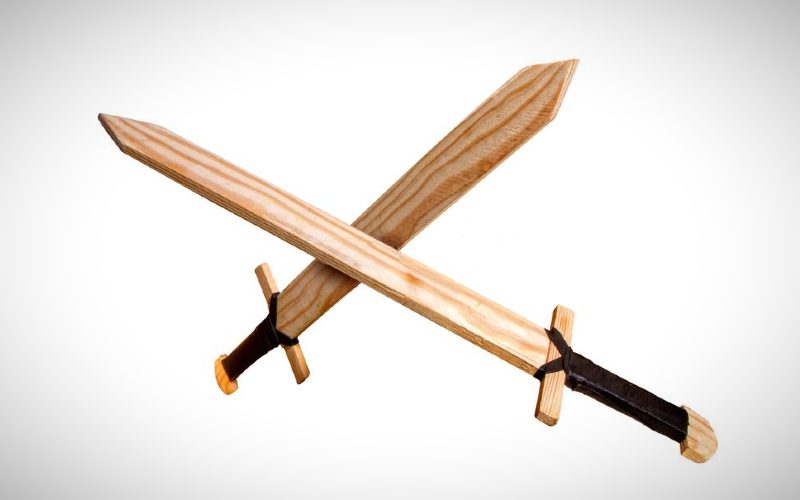
What’s in this article?
Martial artists who study swordsmanship use wooden swords that closely replicate the qualities of real swords. These training weapons are suitable for practicing several sword forms and techniques and are safer for sparring practice compared to metal blades.
We’ve compiled a guide on choosing the best wooden swords for martial arts training and where to get them online.
Types of Wooden Swords
The types of wooden swords used in training depend on the particular sword fighting style. In Japanese martial arts, practitioners use a bokken as a substitute for samurai swords. In Historical European Martial Arts, fencers sometimes utilize wooden sword wasters.
1. Bokken

A bokken is a wooden sword used in solo training and partnered practice. It is a solid, one-piece wood similar in shape, length, and weight to a Japanese sword. It is generally used against different weapons, including the jo or wooden staff. In Japanese martial arts, practitioners do not use their blunt metal swords in sparring, but sometimes utilize them in demonstrations with prearranged movements between opponents.
Like Japanese swords, the bokken varies in length. A daito is a long sword, either a katana or tachi, while the shoto is a short sword, usually a wakizashi. Practitioners use a wooden dagger especially in tanto jutsu training. On the other hand, a suburito is a heavier wooden sword designed for developing muscle strength, but is not used in sparring with a partner.
In kendo, practitioners use the bokken for sword forms or katas and utilize the bamboo sword shinai for sparring. The disadvantage of using a wooden sword in iaido is that there is no scabbard or saya. In Japan, practitioners usually fight with bokken without wearing armor, but in some countries, fencers use the shinai with protective gear.
2. Tai Chi Sword
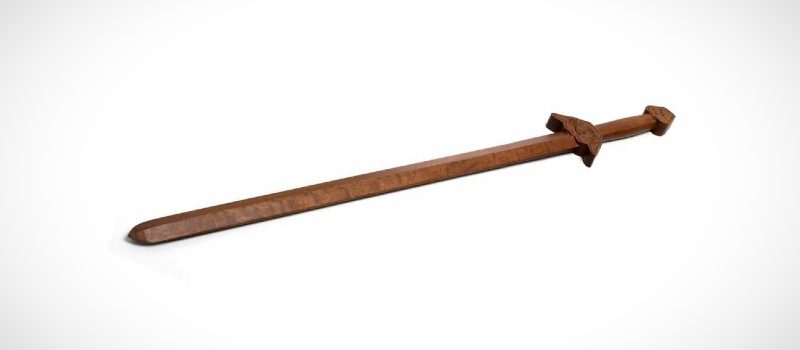
In tai chi chuan or taijiquan, practitioners use the Chinese sword jian, sometimes referred to as taiji jian. Widely used in Yang-style tai chi, the jian is a straight and double-edged sword. Beginners may start with wooden swords for practicing the forms, though advanced practitioners prefer a metal sword.
The other sword type in tai chi is the dao with a slightly curved and single-edged blade, though practitioners often call it a saber. In weapons training, the jian relies on speed and technique while the dao reequires strength and power. More than that, the former is relatively lightweight and needs sword skills to block heavier weapons.
Generally, tai chi practitioners use the jian in solo sequence, sparring, accuracy training, and two-person forms or sword routines. When using wooden tai chi swords in training, beginners usually wear protective headgear and focus their strikes below the shoulders. For dance performances, the jian often comes with a tassel that enhances its aesthetic look.
3. Wooden Sword Wasters
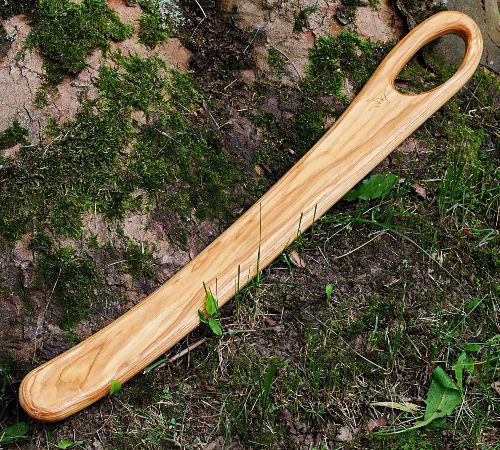
HEMA covers several types of swordsmanship ranging from longswords to arming swords, broadswords, rapiers, and so on. Contrary to popular belief, wooden swords are rarely used in historical fencing clubs as several fencing techniques in medieval and Renaissance swords require flexible metal blades that bend during the thrust.
Still, wooden sword wasters are ideal for practicing sword forms, especially for beginners. They can also be ideal for one-handed sword forms, including saber, dussack, messer, and hanger. Many advanced fencers prefer using steel swords with unsharpened edges, as they replicate the handling characteristics of a real sword and allow thrusting techniques.
Wooden swords are also popular weapons in historical reenactment. Many re-enactors portray the Roman period and use the wooden gladius, while others play the role of Scandinavian warriors wielding their Viking swords. In HEMA, Viking combat is only a reconstruction because there are no detailed accounts regarding how these warriors fought.
How to Choose the Best Wooden Sword for Training
When choosing a wooden sword, it is important to opt for a durable material that can withstand intensive training while being safe enough for sparring practice.
Here are the factors to consider when choosing wooden swords:
Type of Material
Wooden swords may not be as durable as metal swords made with carbon steel and tempered blades, but some wooden materials are superior to others and make excellent training weapons. For a bokken, the Japanese white or red oak is the best quality, though some can be constructed from Japanese sunuke or ebony.
Other wooden swords are made from American hardwood, including hickory, ironwood, and persimmon. However, it is best to avoid cheaper and lighter wood that can easily break under heavy blows. There are also other alternative materials, like high-quality polypropylene plastic that are sturdy enough for training.
Size and Weight
The best wooden swords are the ones that are closely similar to the size and weight of their steel counterparts. One exception is the suburito which is designed to develop muscle strength and is heavier than the typical bokken.
The tai chi sword generally depends on the height of the practitioner. Ideally, its overall length should be from the feet to the base of the breastbone. A longer tai chi sword is generally reserved for advanced practitioners as it is more challenging to control.
In HEMA, wooden swords are rarely used because medieval sword techniques often consist of thrusting moves that wooden blades won’t allow. Some practitioners utilize wasters for practicing dussack, messer, and saber techniques, but they hardly replicate the size and weight of real swords.
Appearance and Construction
The bokken comes with a tsuba or sword guard to protect the hand, but it is not kept in a scabbard or saya. However, the suburito lacks the sword guard and is generally thicker than the usual bokken. On the other hand, the wooden tai chi sword, the jian, often features a flat guard perpendicular to its blade. Several wooden sword wasters have a construction similar to real swords, making them popular among historical re-enactors and stage combatants.
Best Wooden Swords Available Online
Wooden swords are extremely versatile as you can use them in sword-based martial arts, historical re-enactment, stage combat, and cosplay. We rounded up the best wooden swords to help you find the perfect weapon.
1. Bokken Sword
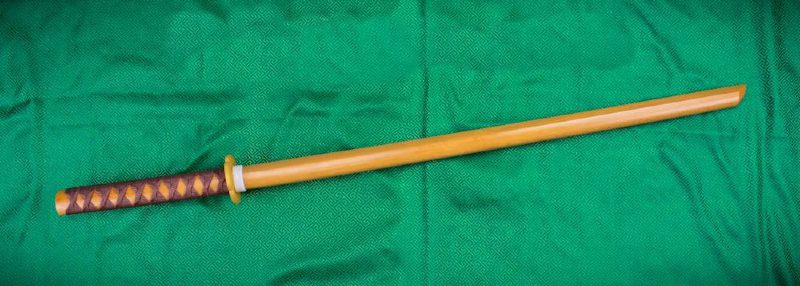
Are you looking for a wooden sword for Japanese martial arts? This bokken has an overall length of 100 centimeters and a blade length of 75 centimeters, making it a long sword or a wooden katana. It is an ideal training sword for aikido, especially for those who constantly practice their falling techniques. Also, some kendo practitioners utilize the bokken in the dojo, though they only use the bamboo shinai for contact drills.
This wooden katana sword is constructed from sturdy wood, though it is not made of Japanese red or white oak. Also, it comes with a relatively small tsuba or sword guard that exposes the hand, so it may not be the best weapon for harsh training. It also comes with a hilt that can be gripped comfortably and a rubber habaki or plastic collar to hold the guard in place. Like most wooden swords, it does not have a scabbard, so it is unsuitable for saya practice.
2. Ninja Sword
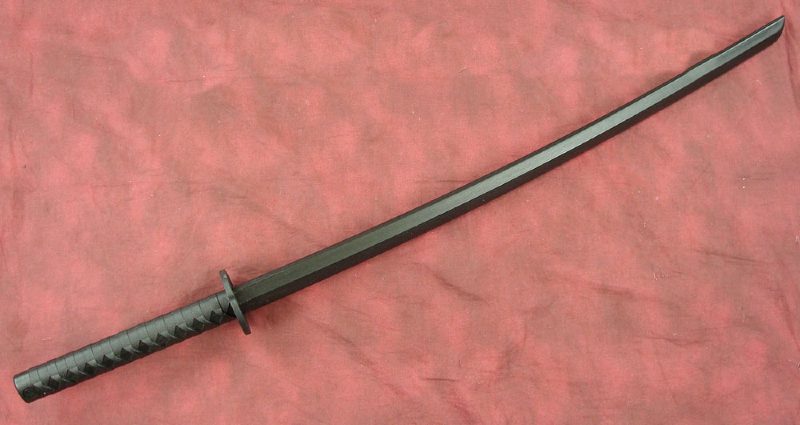
Constructed from high-quality polypropylene plastic, this ninja sword can take you from ninjutsu training to cosplay and beyond. However, it has a relatively sharp tip compared to other wooden swords, so it may not be the best weapon for sparring with a partner. Also, it is too light as a training weapon, making it less ideal in intensive training.
Still, this ninjato is the typical representation of most ninja swords due to its straight blade, square sword guard, and tsuka-ito wrapping. It has an overall length of about 87 centimeters and a blade length of 62 centimeters which is quite long for a ninja sword. Since several anime and manga characters wield the ninjato, it is a good choice as a cosplay sword.
3. Jian Tai Chi Sword
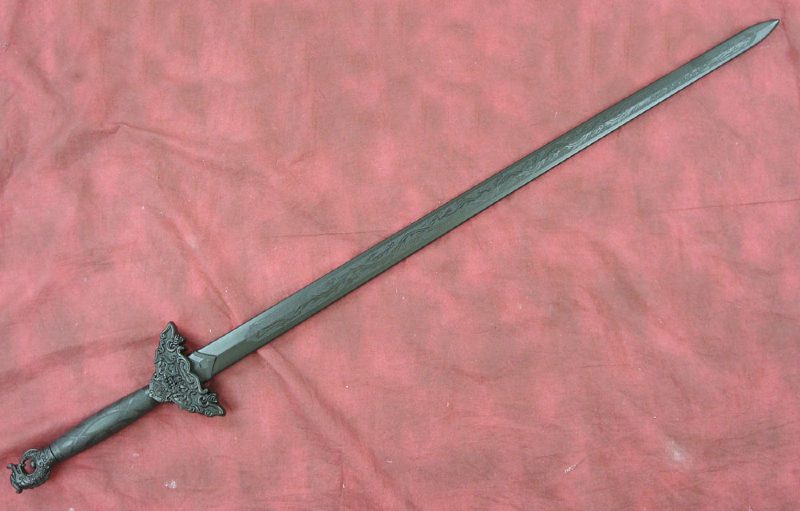
A great alternative to wooden swords, this tai chi sword is constructed from sturdy polypropylene plastic. Like the Chinese jian, it features a straight, double-edged blade. It has an overall length of 98 centimeters and a blade length of 76 centimeters. However, it is quite light for a training weapon as it weighs less than a pound whereas the typical jian weighs around 2 to 3 pounds.
Also, this tai chi sword has a noticeable plastic appearance and lacks a tassel, making it less ideal for dance performances. Still, it can be a good choice for beginners practicing sword forms. It is also a safe way to develop good habits for yourself and your partner. For a budget of around $20, you can have a tai chi sword for everyday training.
4. Viking Foam Sword
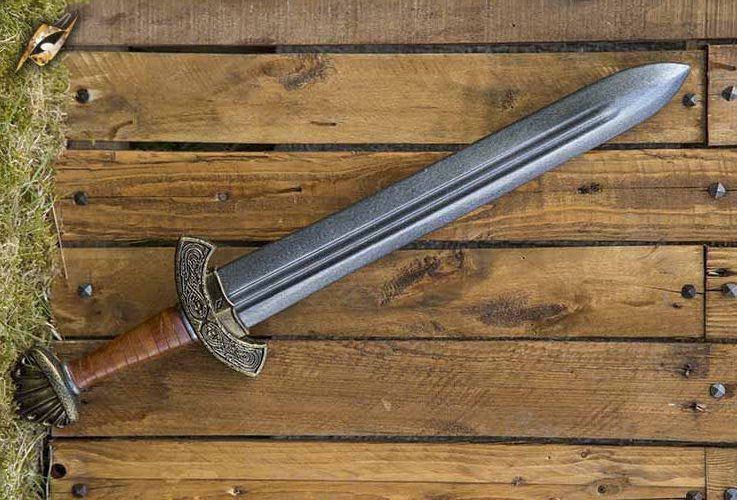
Many re-enactors and LARPers today portray the Viking period, making this foam sword the perfect weapon. Like LARP, historical re-enactments have safety rules and most combatants use weapons with rounded edges. This Viking sword is constructed from high-quality closed-cell foam with a fiberglass core which can withstand light sparring. It measures about 59 centimeters with its blade around 41 centimeters long.
However, this Viking sword is not recommended in HEMA as the material affects the balance of the blade. Also, HEMA practitioners resort to Viking sword replicas with flexible blades and shields—not foam swords. It may not be the best practice sword for martial arts, but it can be ideal for stage combat and cosplay. For a budget of around $60, you’ll have a Viking sword for unleashing your inner warrior.
5. Wooden Gladius

Whether you want to be a Roman legion or a gladiator, this gladius is perfect for you. Like the Viking sword, it is popular among historical re-enactors. It is rare in HEMA clubs to use a wooden gladius, mainly because there are no surviving martial art manuals that teach the sword techniques of using the gladius for combat. Still, there are some creative reconstructions in the HEMA community and some combatants utilize wooden sticks with shields.
This wooden gladius measures about 68 centimeters, with its blade about 50 centimeters, the average length of a Roman short sword. It is also constructed from high-quality wood and has a rounded tip for safety, making it ideal for light sparring and stage combat. However, its relatively plain appearance makes it less appealing in cosplay especially for those who want to don a Roman soldier’s armor.
Conclusion
Outside of tameshigiri or test cutting practice, no one would use a sharp steel blade in martial arts training. There are several forms of swordsmanship and fencers use different types of wooden swords. While the bokken is the primary training weapon in Japanese martial arts, only a few HEMA practitioners use wasters. Also, beginners in tai chi chuan resort to wooden swords when practicing sword forms.




